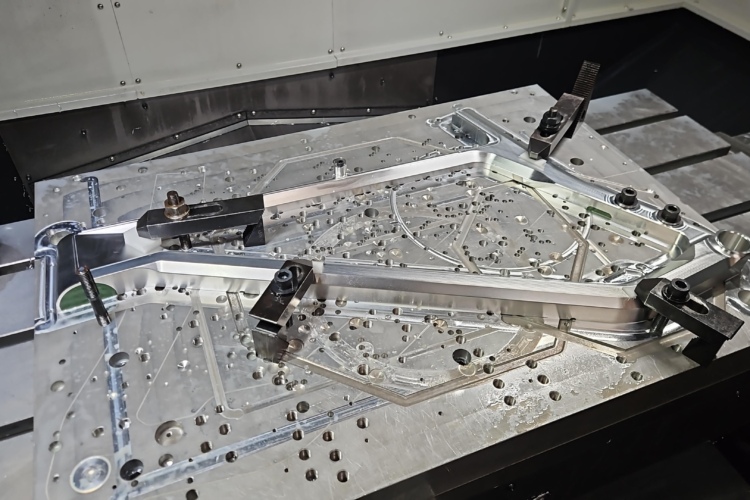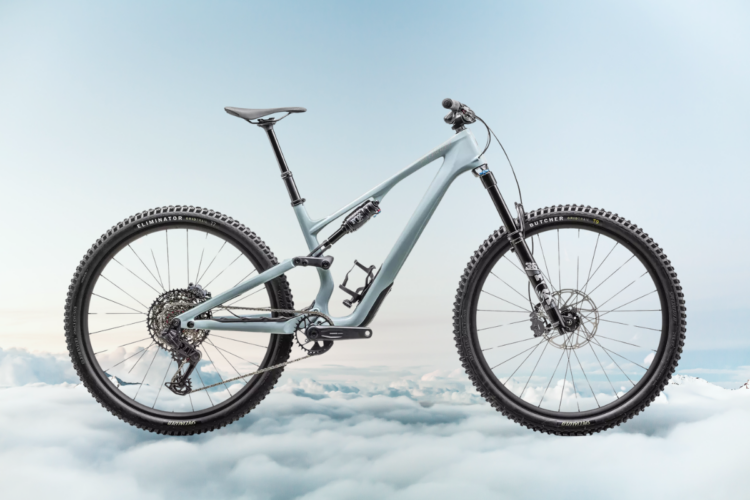
These are exciting times to be a mountain biker. It’s not every season that an entirely new mountain bike product category is invented, but that’s just what happened when tire inserts landed on the scene. With roughly half a dozen companies suddenly marketing tire inserts, it’s interesting to see that each one has taken a unique approach to the design.
At Sea Otter Europe I picked up a set of Panzer tire inserts and after riding with them on my home trails, I’ve found they work exactly as advertised.
Construction and installation

Panzer constructs their inserts using a foam material called GEN10. The material was chosen based on its light weight, compression characteristics, and its resistance to absorbing liquid (tire sealant). Pressing the material, it’s quite firm, but quickly rebounds back to shape.
I’ve been testing the “aggressive” version of the 29er Panzer inserts, both front and rear. This version is designed for 29er tires 2.3-2.6″ wide. At this size, the inserts weigh about 115g per wheel, and there is a 70g, “lightweight” version designed for tires 2.0-2.3″ wide. Sizes for 27.5″ wheels are available as well.

A cross-section of the Panzer tire insert is a pentagon, with short vertical sides, a broad top, and medium angled sides leading to the vertex. The wedge of the vertex is what sits inside the wheel’s rim channel, placing the wide top directly underneath the center of the tire tread.

The inserts are sized based on wheel diameter and tire width. Right out of the package, they’re ready to be installed, no need to connect the ends to make a hoop.
Installation is a cinch. I placed the insert inside my tire, then mounted it to the rim as usual, starting on one side, then moving to the other. It takes a little extra effort to squish the bead into the rim channel, but not much. I did struggle to mount one tire out of the three I tested, but I can’t say the struggle was specific to the inserts. It could have due to the tire itself.
Once I had the bead inside the rim all the way around, I was able to pump my tubeless tire up using just a floor pump. The foam insert does a great job pushing the tire outward and placing enough pressure on it to get the bead tight inside the rim.

Adding tubeless sealant was a little tricky. Because the tire insert comes to a point at the center of the rim channel, it sits right on top of the tire valve. I like to add sealant through the valve whenever I can, and while I ultimately was able to force the sealant past the insert, it was a messy job the first time.
Panzer says it’s important to poke the insert with a pointy object through the open valve to separate the insert from the valve outlet. I did this using a Milkit tire sealant syringe.
After learning a trick or two from using the Vittoria Air-Liner inserts, I found removing the inserts and replacing the tire to be fairly simple. Still, pulling the insert out trailside — say, to add a tube — does not promise to be an easy task.
Performance
There seems to be some confusion about what mountain bike tire inserts are designed to do. Maybe it’s just me, but I’ve read a lot of claims about the benefits of tire inserts that seem too good to be true. I think Panzer takes the right line with their claims, simply stating that the product is designed to protect rims, reduce the likelihood of certain types of punctures, and keep riders safe in a flat-tire situation.
Notice there aren’t any claims about improving ride quality. Panzer says their five-point support design is meant to “act as reinforcement, only in critical areas prone to punctures by blows.” The design isn’t meant to reduce tire squirm or flop, it’s primarily there to reduce pinch flats and rim dings. The company goes on to make this even more explicit, saying “it doesn´t affect the way the tire behaves or the desired air pressure either.”

In terms of protecting rims, the Panzer tire inserts are aces. The foam is nice and thick, and it’s surprisingly firm. I can’t even imagine the amount of force it would take for a rock to ding a rim through the Panzer inserts. Like, maybe if a 300 pound rider hucked off the top of a 3-story building onto a triangular rock, he could damage a rim. But outside of that, rim damage seems pretty unlikely.
I’ve actually started riding my bike with that kind of thinking in mind, to no ill effect. With the Panzer inserts I’m more willing to attack rocks and roots at higher speeds, and honestly I feel like I can cheat on my technique a little bit because the inserts are there. Smooth riding takes practice and finesse, and not all of us have it on every ride.
Preventing punctures might sound like a silly thing in this day and age of tubeless tires, but those who ride hard know the pain of a puncture. Pinch flatting not just a tube but a tire can be pretty devastating, one because of the force of the impact that causes this, and two because a pinched sidewall isn’t an easy trailside fix. Running low tire pressures just makes these types of punctures more likely.
I haven’t experienced a pinch flat while running the Panzer tire inserts, but I did burp a tire on a recent ride. Based on the profile of the insert, the foam isn’t really pressing the tire bead into the wall, so it’s no surprise that burps happen, especially at lower tire pressures. I normally find tire burps on the trail pretty frustrating, but Panzer had my back this time.
I decided to ride around on the flat front tire for a little bit just to get a sense of its run-flat performance and everything worked as expected. I was on a group ride and honestly I was tempted to try finishing the ride out on the flat tire, but quickly decided that riding for another 5 or 6 miles that way would be fairly miserable (and bad for my tire too). The flat tire rolled OK, better than I expected, and I could see myself cruising on it for a mile or more in an emergency. It’s certainly good enough to finish out a tricky or steep run safely.

Knowing there was plenty of fresh sealant in the tire, I decided to shake the tire around and try re-inflating with my mini pump. Much to my surprise, it worked the first time. The Panzer insert kept the tire tight on the rim, even after cruising around at 0psi. I finished the ride and the tire is still holding air.
In the end, this is what tire inserts are all about for me: avoiding trailside tire drama. Panzer tire inserts don’t take a lot of effort to install and the additional weight is fairly negligible, which makes them a good choice for most riders from XC to DH.
While testing the inserts with a 29×2.25″ tire, I experienced a slight wobble in my tire that I didn’t notice when testing with a 29×2.35″ tire. Seeing no obvious bulge or any irregularity on the Panzer insert itself, I can only conclude there is a pretty hard cut-off when it comes to the sizing. That is, a 2.25″ tire shouldn’t be “rounded up” and paired with the “Aggressive” insert size, which is meant for tires 2.3-2.6″ wide. In retrospect, the 29×2.25″ tire was also the most difficult one to mount with the insert, which is officially too big for that tire.
Availability
At the moment, Panzer tire inserts are available in most of Europe, and the company is currently looking for distributors in the US and Canada. Pricing ranges from 55€ to 65€ ($65 – $75 USD) per tire, depending on the size.
Thanks to Panzer for providing the tire inserts for review.











3 Comments
Sep 7, 2018
Sep 13, 2018
Sep 13, 2018